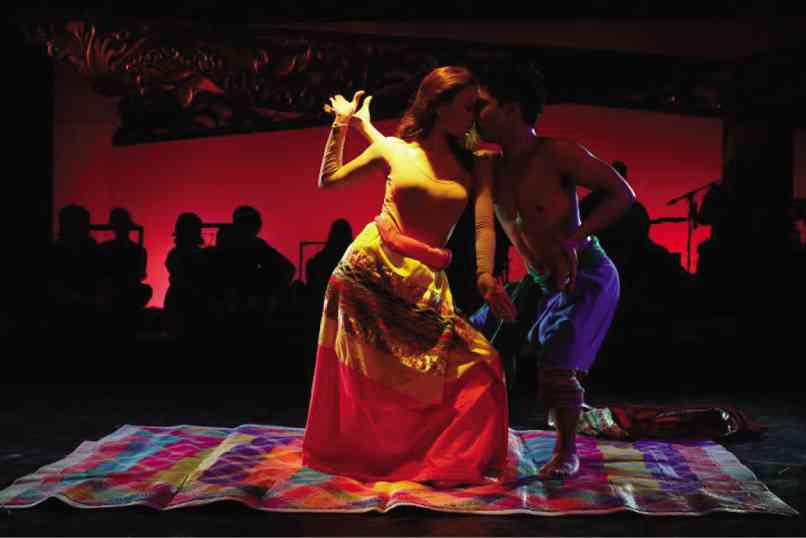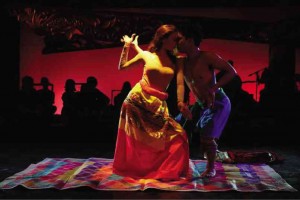
Ricardo Abad
Some students may regard it as a hobby until they graduate, while others see it as a bona fide drama course for a long-term career. Regardless of its practitioners’ motivations, the recent developments in university-based theater organizations have transformed campus theater into a serious training ground for students’ professional, intellectual and moral growth once they leave the academe.
First, a little disclosure. Starting sophomore year in college, I spent a huge chunk of my time with Tanghalang Ateneo (TA) when it was just an informal theater group finding its legs. During the mid-’80s in the Loyola Heights campus, there was no academic or “professional” gain whatsoever to it. Our extracurricular work then was not credited as part of the requirements of the curriculum. No one thought of listing in their CVs the skills gained from participation in the drama group. Every single centavo earned—it was a while before the university granted TA subsidy—went back to producing the next play.
We loved what we did and bonded with each other as a second family—and that was enough reason to go on. But, personally speaking, the lessons learned in those three years formed behavior patterns, intellectual mind-sets and an emotional resilience that served us well when we migrated to the “real world.”
More than a hobby
But then again, passion, regardless of the eventual prize, has always been the fuel that prods a theater person, student or practitioner alike, to do his best. Ricky Abad, our then moderator who would later become TA’s artistic director for the next 30 years, banked on it as he coached his core of students who were actually majoring in nontheater courses like business administration, finance, marketing, history, literature, communication arts, etc.

Abad himself ran on it. He was a Teatro Pilipino actor by night and a professor at the Ateneo’s Socio-Anthropology Department by day. It would take a couple of decades before he would launch the Fine Arts Program where colleagues like the late National Artist Salvador Bernal could formally teach theater design.
“We had to make theater more than a hobby for the students,” Abad says. “We could have an elective like acting classes which had only 23 students the first year.”
Among the prominent theater practitioners TA has produced are actors Nonie Buencamino, Richard Cunanan and Gabe Mercado; production designer Gino Gonzales, and award-winning playwrights Ron Capinding, BJ Crisostomo and Guelan Luarca. These days, when students do apply for membership in TA, “they see that they have to be professional. It’s not just a play,” says Abad.
Prominent neighbor
Dulaang UP (DUP), TA’s older and more prominent neighbor a jeepney ride away, started as the official theater arm to the state university’s speech, communication and theater arts course in 1976. From its founding by Tony Mabesa in 1976, it was envisioned as a cradle for future professionals.
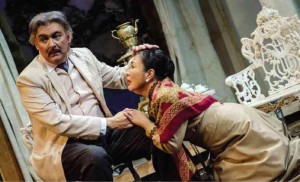
Many of the country’s leading thespians and theater practitioners today trace their roots to Dulaang UP: Bart Guingona, Irma Adlawan, Shamaine Centenera Buencamino, Frances Makil-Ignacio, Eugene Domingo, Stella Cañete, Ces Quesada, Jon Santos; playwrights and directors such as Floy Quintos, Tuxqs Rutaquio, Dexter Santos, Dennis Marasigan; and other creative luminaries such as film director Aureaus Solito, Ballet Philippines artistic director Paul Morales and acclaimed international scenographer Clint Ramos.
Dulaang UP veteran and current artistic director Alex Cortez tells both parents and students that “theater is not just a hobby, but something that people can make a profession of. We explain to them why rehearsals end late—and they have to sign a waiver.”
Both DUP and TA members spend an average of three hours a day on production work after classes. This can increase once opening day nears. However, students cannot use the long hours to justify their missing classes or deadlines in other subjects.
Cortez makes it plain to his students: “This is the kind of world you are entering. If you cannot make it here, you cannot make it out there.”
Newfound skills
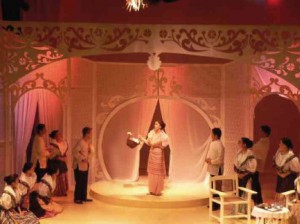
While recent DUP and TA alumni try to make their mark in the theater world on and offstage, others use their newfound skills in performance, presentation and production management in other fields such as advertising, events, public relations, call centers and education. The growth of professional theater outside campus and the international opportunities offered to Filipino theater actors by productions like “Miss Saigon” have increased the interest of many students in the art.
Such that the UP Theater Arts Department has created a certificate course for applicants who may have failed the UP general entrance exam but passed the department’s auditions. Cortez explains the difference and the benefits: “The certificate offers hands-on instruction in theater without the theoreticals. We teach the students the ropes of production management and performance.”
Meanwhile, Abad has also been beefing up his training program for TA students through the Fine Arts Program, and the occasional coaching of TA alumni and colleagues and friends from the theater industry and the Cultural Center of the Philippines, and also DUP alumni who are getting involved with TA plays.
“Right now, we are working with guest artists like Myra Beltran and Floy Quintos. In the past, I collaborated with Badong [Bernal] and Nonon Padilla. I believe that collaboration is essential to make the theater companies grow; it invites new resources and ideas and also makes the students work under different artists.”
Expanding his students’ horizons can also come by breaking through the usual campus parameters, including the international linkages. Cortez plans on creating linkages with other schools like Carnegie Mellon to “bring their students here and train them in theater and vice-versa. We can reach out to other countries such as Australia and the UnitedStates.”
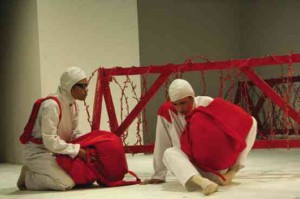
International festivals
Meanwhile, Abad has been slowly bringing some of his TA students to participate in workshops and perform in international university-based theater festivals based in India, Singapore, China and, recently, Vietnam. Some of these international organizations have also invited him to direct their plays.
He admits, “My confidence and that of my actors increased. It does not matter if you are acting opposite artists from Hong Kong, China or Singapore. This is cultural exposure—the students see the styles of different schools and theater companies.”
Ateneo and the students help raise funds for their transportation while the host universities provide venue, food and training. Abad says, “We’d like to do this every year if we can find the money.”
Right now, TA and Ateneo’s fine arts program do things under a partnership; Abad still dreams of placing his group under an official theater program.
“This can help bring in more resources and you’d have someone from the school handling the finances, for example. Right now, it’s the student officers handling it, and there is usually a turnover.”
Cortez also wants similar, greater exposure for his students outside of the UP area. Thus, the blockbuster DUP production “Orosman and Zafira” had a successful run at the SM Mall of Asia last year.
More adherents
Support has been increasing for both organizations’ efforts. Interestingly enough, in the next few years, both DUP and TA might be moving to their own new individual buildings, which will have their own rehearsal spaces and theater venues. They need that space, because their efforts at establishing a professional training ground for new generations of theater artists appear to be gaining more and more adherents.
Cortez looks back: “When I started, there were less than 50 students for the entire theater course. Now we have 150 for the four years. And students now are becoming interested not just in acting but in the technical aspects like production management, stage management and lighting design.”
“How does theater equip the student?” Abad muses. “He learns integrity of the work, discipline of the craft, beating the deadline, the capacity to improvise. Theater is also collaborative—you have to learn to work with people, even those you don’t like.”

